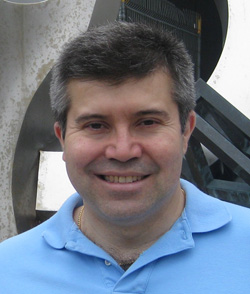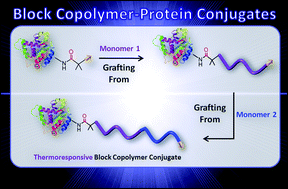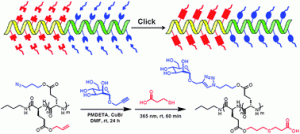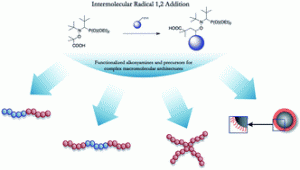
Milan Maric studied Chemistry (B.Sc.) and Chemical Engineering and Management (B.Eng.&Mgmt.) at McMaster University in Hamilton, Ontario, Canada. He then pursued graduate studies working with Chris Macosko at the University of Minnesota-Twin-Cities in the area of compatibilization of thermoplastic/silicone blends, earning his Ph.D. in 1999. He then worked in the Scale-up Engineering Group at the Xerox Research Centre of Canada (XRCC) from 1999-2003 and subsequently joined McGill University in 2003 as an Assistant Professor in the Department of Chemical Engineering. In 2009, he was promoted to Associate Professor. Maric’s research group principally focuses on the application of nitroxide mediated polymerization to develop functional materials for a wide range of applications such as block copolymer surfactants, membrane/barrier materials, conductive copolymers and stimuli-responsive polymers.
Please follow the link for further information on Milan Maric’s research group and his recent paper in Polymer Chemistry.
What was your inspiration in becoming a chemist?
I thank my high school teachers and the professors at my undergraduate university for providing me with the stimulus. I liked the ability to creatively transform materials and to do it in a methodical and disciplined manner.
What was the motivation behind the research in your recent Polymer Chemistry paper? (DOI: 10.1039/C1PY00190F)
The main thrust of my research group is to use nitroxide mediated polymerization (NMP) for functional materials. Specifically, we have been trying to show that NMP can be used for a wider range of monomers than has been traditionally associated with NMP, such as methacrylates. In this particular case, we have been trying to make epoxy functional block copolymers with glycidyl methacrylate and our paper describes how we can do that with the BlocBuilder family of nitroxides.
Why did you choose Polymer Chemistry to publish your work?
Polymer Chemistry, since its inception, has provided an excellent forum to disseminate the latest developments in polymer synthesis techniques. We thought the results of our work were aligned well with the aims of the journal and we felt it would be an interesting venue to communicate our work with our peers.
In which upcoming conferences may our readers meet you?
I will be at the ACS fall meeting in Denver at the end of August and after that, I will attend the CSChE meeting in London, Ontario in October.
How do you spend your spare time?
I try to keep active with athletics and I am trying to stay in shape by weight training and swimming.
Which profession would you choose if you were not a scientist?
Growing up in Canada, I dreamed of being an ice hockey player, naturally, although soccer was the only sport I was allowed to put school in a subordinate position. More realistically, I think I would still be involved in teaching in some kind of capacity.













 Eric Drockenmuller was born in 1973 in Thionville (France), and received his PhD degree in 2002 from the University of Strasbourg (France) after working on nitroxide-mediated radical polymerization. He undertook a two years postdoctoral position with Prof. C. J. Hawker (IBM Almaden Research Center, California, USA) and Prof. T. P. Russell (University of Massachusetts, Amherst, USA) working on the synthesis and functionalization of nanostructured materials. He was appointed Assistant Professor in 2004 and full Professor in 2011 at the University of Lyon 1 (France). Since October 2010 he has been a junior member of the “Institut Universitaire de France” (IUF).
Eric Drockenmuller was born in 1973 in Thionville (France), and received his PhD degree in 2002 from the University of Strasbourg (France) after working on nitroxide-mediated radical polymerization. He undertook a two years postdoctoral position with Prof. C. J. Hawker (IBM Almaden Research Center, California, USA) and Prof. T. P. Russell (University of Massachusetts, Amherst, USA) working on the synthesis and functionalization of nanostructured materials. He was appointed Assistant Professor in 2004 and full Professor in 2011 at the University of Lyon 1 (France). Since October 2010 he has been a junior member of the “Institut Universitaire de France” (IUF).


